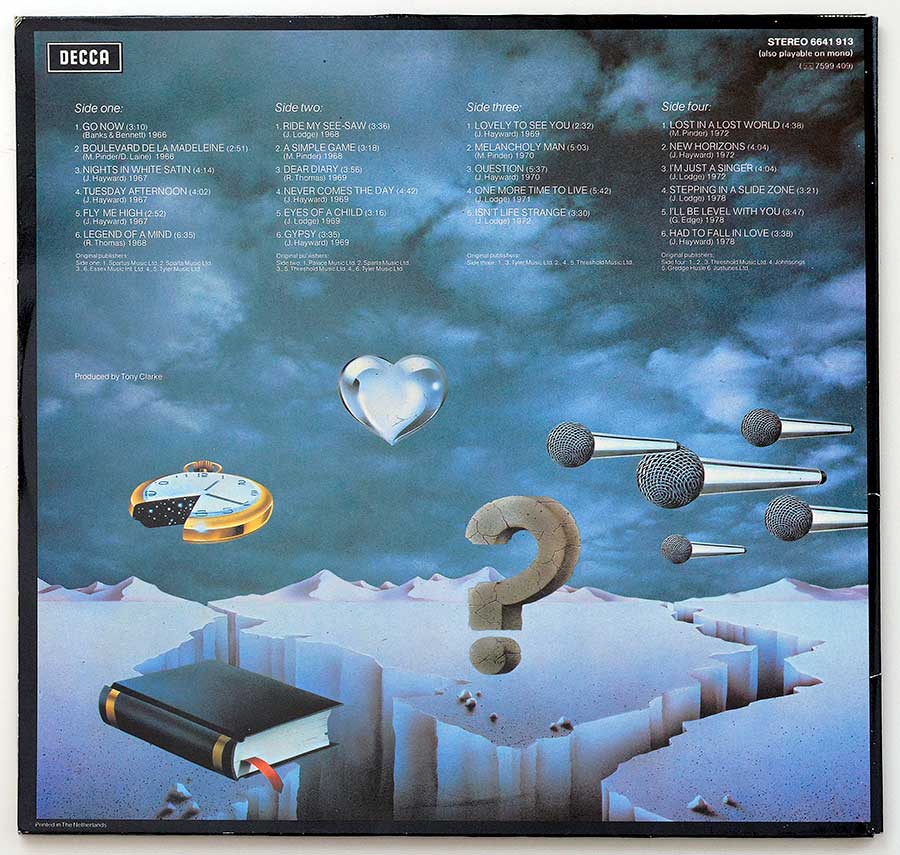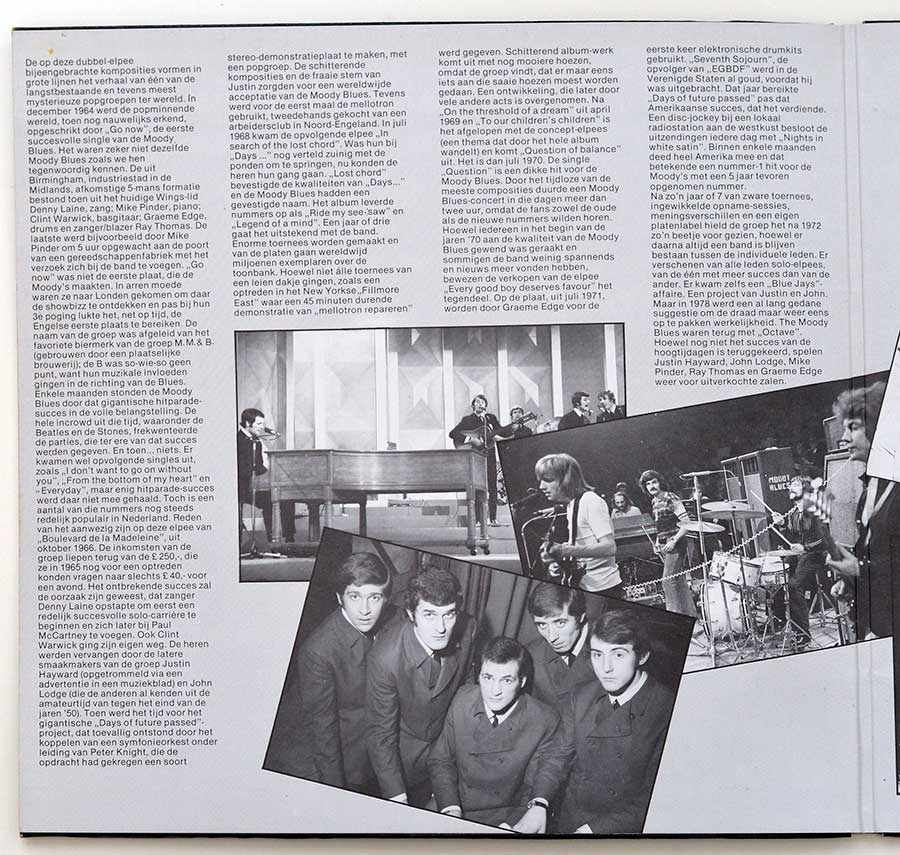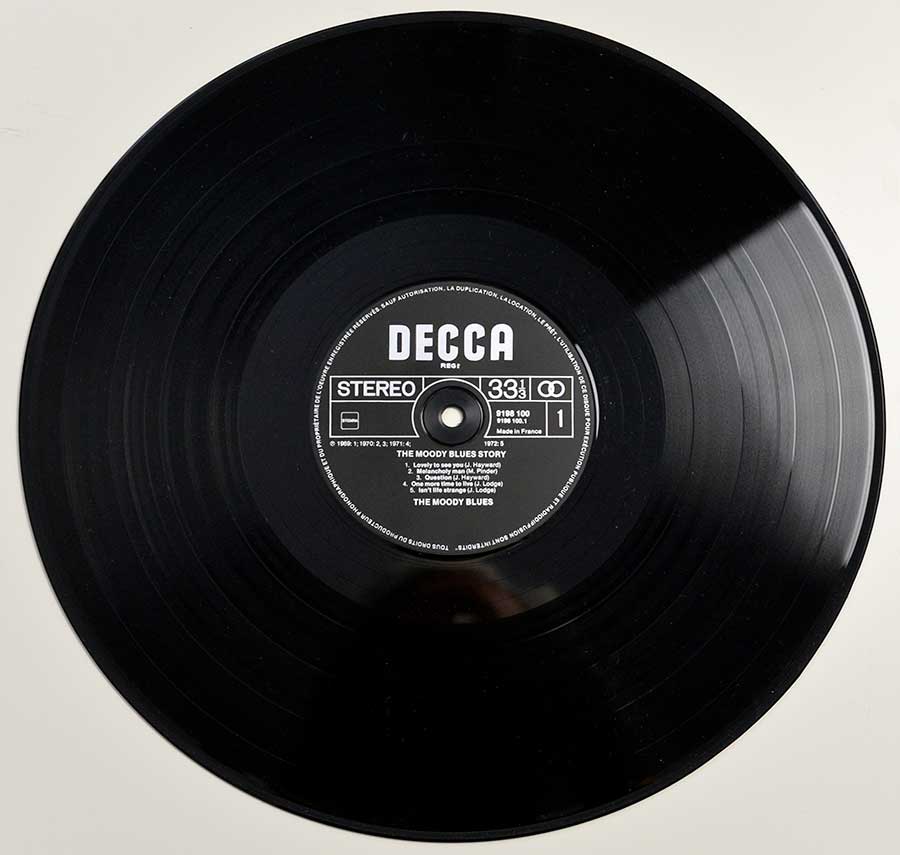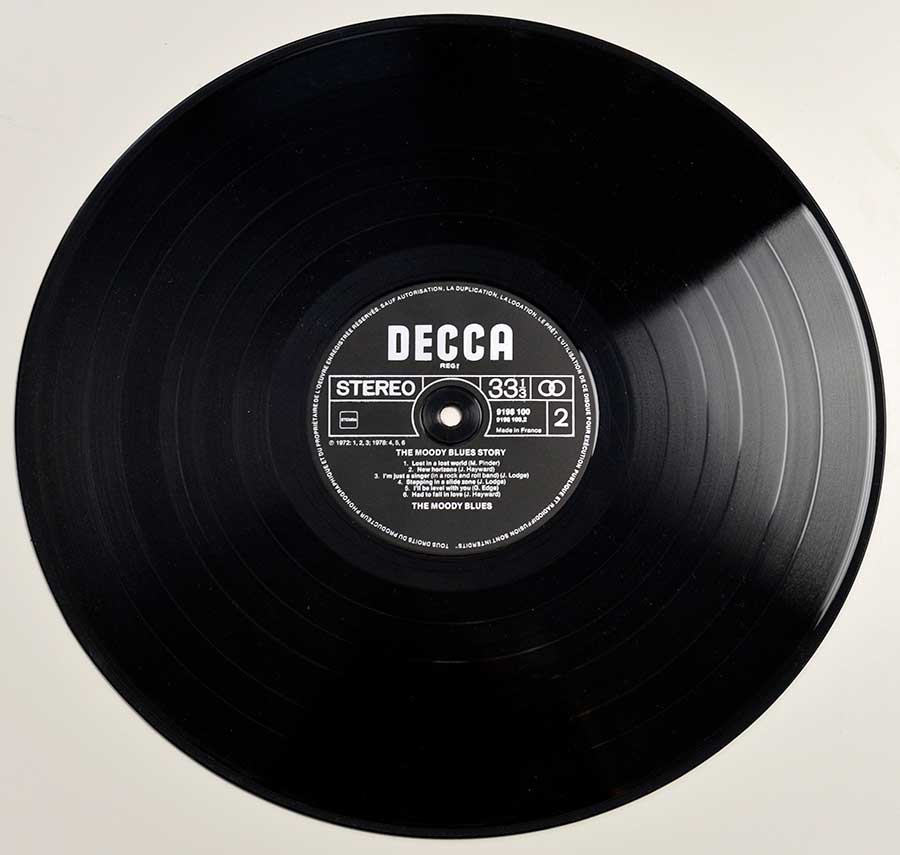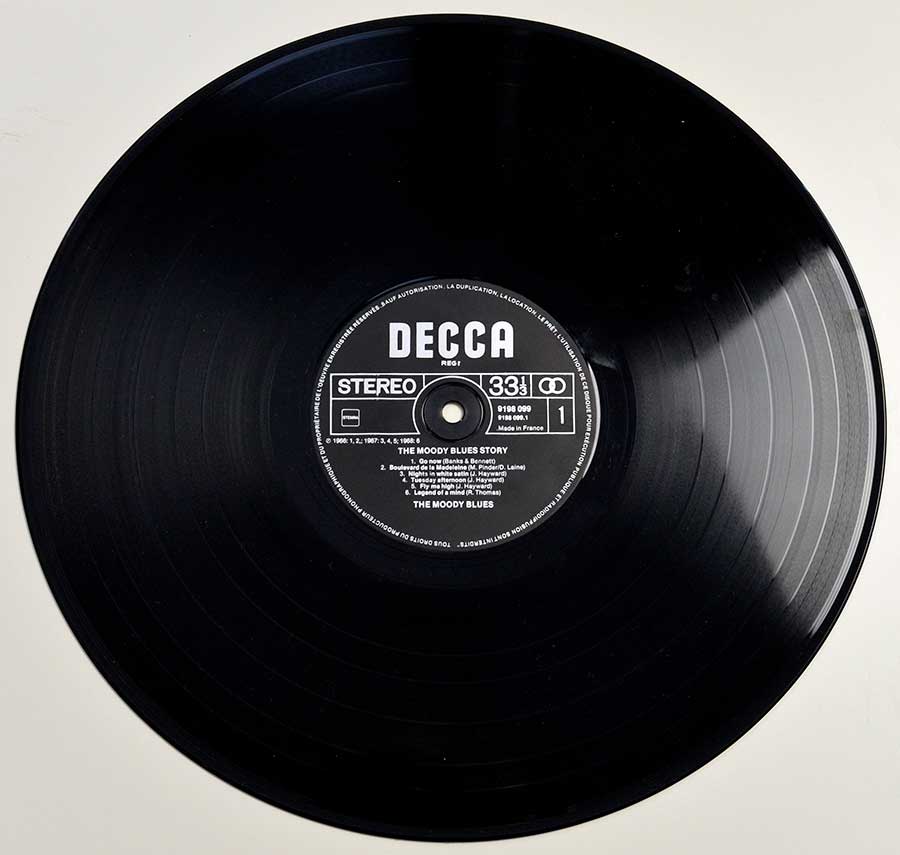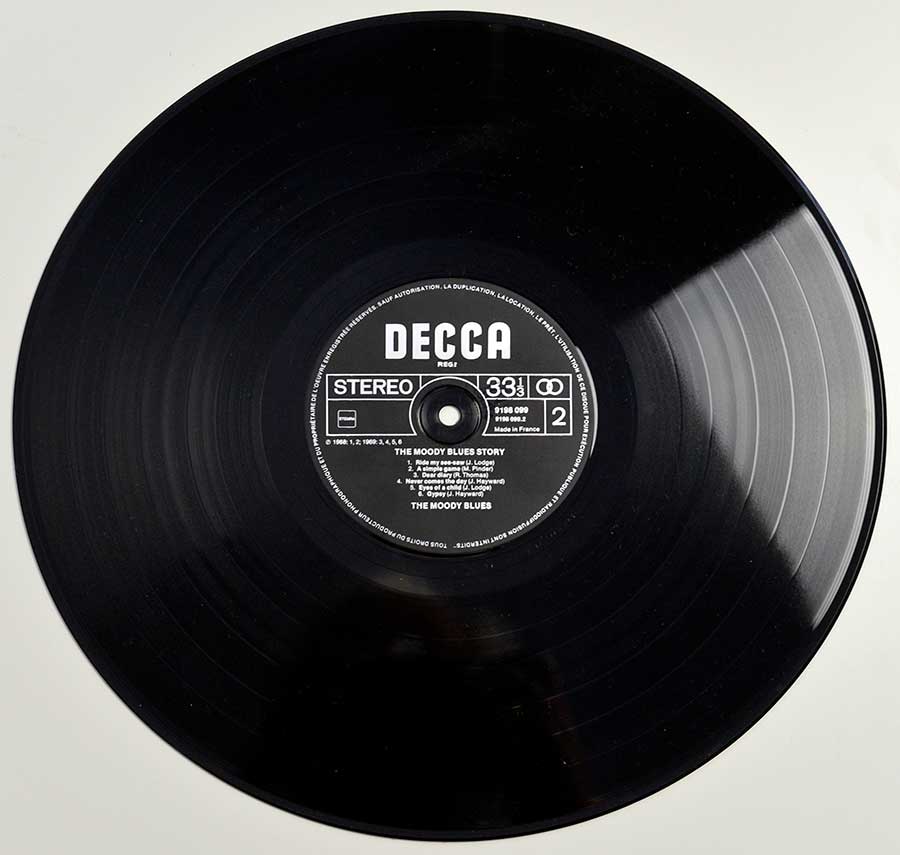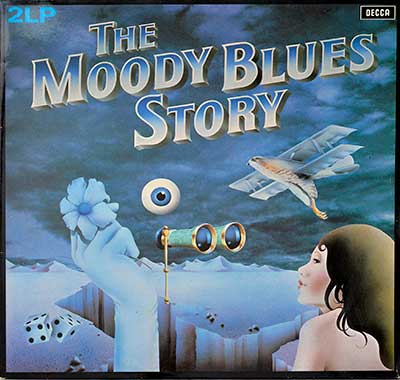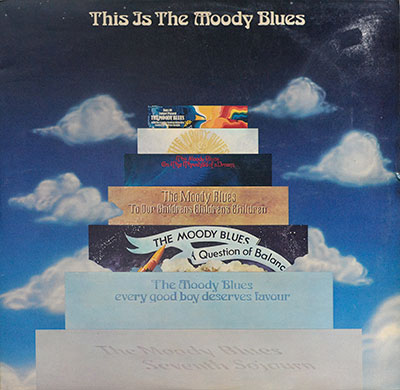Transcript of the original liner notes:
De op deze dubbel-elpee bijeengebrachte komposities vormen in grote lijnen het verhaal van één van de langst bestaande en tevens meest mysterieuze popgroepen ter wereld. In december 1964 werd de popminnende wereld, toen nog nauwelijks erkend. opgeschrikt door "Go now", de eerste succesvolle single van de Moody Blues. Het waren zeker niet dezelfde Moody Blues zoals we hen tegenwoordig kennen. De uit Birmingham, industriestad in de Midlands. afkomstige 5-mans formatie bestond toen uit het huidige Wings-lid Denny Laine, zang: Mike Pinder, piano: Clint Warwick, basgitaar: Graeme Edge, drums en zanger/blazer Ray Thomas. De laatste werd bijvoorbeeld door Mike Pinder om 5 uur opgewacht aan de poort van een gereedschappenfabriek met het verzoek zich bij de band te voegen. "Go now" was niet de eerste plaat, die de Moody's maakten. In arren moede waren ze naar Londen gekomen om daar de showbizz te ontdekken en pas bij hun 3e poging lukte het, net op tijd. de Engelse eerste plaats te bereiken.
De naam van de groep was afgeleid van het favoriete biermerk van de groep M. M.& B. (gebrouwen door een plaatselijke brouwerij); de B was so-wie-so geen punt, want hun muzikale invloeden gingen in de richting van de Blues. Enkele maanden stonden de Moody Blues door dat gigantische hitparade-succes in de volle belangstelling. De hele incrowd uit die tijd, waaronder de Beatles en de Stones, frekwenteerde de parties. die ter ere van dat succes werden gegeven. En toen... niets. Er kwamen wel opvolgende singles uit. zoals don't want to go on without you", ,From the bottom of my heart" en Everyday, maar enig hitparade-succes werd daar niet mee gehaald. Toch is een aantal van die nummers nog steeds redelijk populair in Nederland. Reden van het aanwezig zijn op deze elpee van „Boulevard de la Madeleine", uit oktober 1966. De inkomsten van de groep liepen terug van de £ 250,-, die ze in 1965 nog voor een optreden konden vragen naar slechts £ 40.- voor een avond.
Het ontbrekende succes zal de oorzaak zijn geweest, dat zanger Denny Laine opstapte om eerst een redelijk succesvolle solo-carrière te beginnen en zich later bij Paul McCartney te voegen. Ook Clint Warwick ging zijn eigen weg. De heren werden vervangen door de latere smaakmakers van de groep Justin Hayward (opgetrommeld via een advertentie in een muziekblad) en John Lodge (die de anderen al kenden uit de amateurtijd van tegen het eind van de jaren '50). Toen werd het tijd voor het gigantische „Days of future passed"- project. dat toevallig ontstond door het koppelen van een symfonieorkest onder leiding van Peter Knight, die de opdracht had gekregen een soort stereo-demonstratieplaat te maken, met een popgroep. De schitterende komposities en de fraaie stem van Justin zorgden voor een wereldwijde acceptatie van de Moody Blues. Tevens werd voor de eerst maal de mellotron gebruikt, tweedehands gekocht van een arbeidersclub in Noord-Engeland. In juli 1968 kwam de opvolgende elpee "In search of the lost chord".
Was hun bij „Days ..." nog verteld zuinig met de ponden om te springen, nu konden de heren hun gang gaan. "Lost chord" bevestigde de kwaliteiten van Days... en de Moody Blues hadden een gevestigde naam. Het album leverde nummers op als "Ride my see-saw" en "Legend of a mind". Een jaar of drie gaat het uitstekend met de band. Enorme toernees worden gemaakt en van de platen gaan wereldwijd miljoenen exemplaren over de toonbank. Hoewel niet álle toernees van een leien dakje gingen, zoals een optreden in het New Yorkse "Fillmore East" waar een 45 minuten durende demonstratie van " mellotron repareren" werd gegeven. Schitterend album-werk komt uit met nog mooiere hoezen. omdat de groep vindt, dat er maar eens iets aan die saaie hoezen moest worden gedaan. Een ontwikkeling. die later door vele andere acts is overgenomen. Na "On the threshold of a dream" uit april 1969 en "To our children's children" is het afgelopen met de concept-elpees (een thema dat door het hele album wandelt) en komt „Question of balance" uit. Het is dan juli 1970. De single "Question" is een dikke hit voor de Moody Blues.
Door het tijdloze van de meeste composities duurde een Moody Blues-concert in die dagen meer dan twee uur, omdat de fans zowel de oude als de nieuwe nummers wilden horen. Hoewel iedereen in het begin van de jaren '70 aan de kwaliteit van de Moody Blues gewend was geraakt en sommigen de band weinig spannends en nieuws meer vonden hebben, bewezen de verkopen van de elpee "good boy deserves favour" het tegendeel. Op de plaat, uit juli 1971, worden door Graeme Edge voor de eerste keer elektronische drumkits gebruikt. "Seventh Sojourn", de opvolger van ..EGBDF- werd in de Verenigde Staten al goud, voordat hij was uitgebracht. Dat jaar bereikte "Days of future passed" pas dat Amerikaanse succes, dat het verdiende. Een disc-jockey bij een lokaal radiostation aan de westkust besloot de uitzendingen iedere dag met "Nights in white satin". Binnen enkele maanden deed heel Amerika mee en dat betekende een nummer-1 hit voor de Moody's met een 5 jaar tevoren opgenomen nummer. Na zo'n jaar of 7 van zware toernees. ingewikkelde opname-sessies, meningsverschillen en een eigen platenlabel hield de groep het na 1972 zo'n beetje voor gezien, hoewel er daarna altijd een band is blijven bestaan tussen de individuele leden. Er verschenen van alle leden solo-elpees, van de één met meer succes dan van de ander. Er kwam zelfs een "Blue Jays" affaire. Een project van Justin en John. Maar in 1978 werd een al lang gedane suggestie om de draad maar weer eens op te pakken werkelijkheid. The Moody Blues waren terug met "Octave".
Hoewel nog niet het succes van de hoogtijdagen is teruggekeerd. spelen Justin Hayward, John Lodge. Mike Pinder, Ray Thomas en Graeme Edge weer voor uitverkochte zalen.

